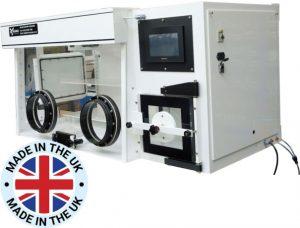A Complete Guide to Anaerobic Organisms in Anaerobic Chambers
Enter the fascinating world of anaerobic organisms and the specially designed anaerobic chambers that make this research possible. This guide will take you through everything you need to know about these unique organisms and the high-tech environments that support their study.
Definition
Anaerobic organisms, or anaerobes, are microorganisms that thrive in environments devoid of oxygen. Unlike their aerobic counterparts, anaerobes utilize other molecules such as nitrate, sulfate, or carbon dioxide for their metabolic processes. This adaptation allows them to inhabit niches where oxygen is scarce or absent.
The Role of Anaerobic Organisms in Nature
Ecological Importance
Anaerobic organisms are important in various ecosystems. They are essential in processes such as:
- Decomposition: Breaking down organic matter in environments like wetlands and deep-sea vents.
- Nitrogen Cycle: Contributing to nitrogen fixation and denitrification.
Industrial Applications
In industry, anaerobic organisms are invaluable for:
- Waste Treatment: Anaerobic digestion processes in sewage treatment.
- Biogas Production: Converting organic waste into methane-rich biogas.
Anaerobic Chambers: An Overview
Definition and Purpose
Anaerobic chambers are specialized lab equipment designed to create and maintain an oxygen-free environment. These chambers are crucial for the cultivation and study of anaerobic organisms.
Key Components of Anaerobic Chambers
- Gas Mixing System: Ensures a precise blend of gases (usually nitrogen, hydrogen, and carbon dioxide) to replace oxygen.
- Catalysts: Typically palladium, used to remove any residual oxygen.
- Sealed Environment: Includes gloves and ports to handle materials without exposing them to air.
Maintaining Anaerobic Conditions
Monitoring Oxygen Levels
Regularly check the oxygen levels using built-in sensors. Any increase in oxygen indicates a breach that must be addressed immediately.
Gas Mixtures and Flow Rates
Maintain the correct gas mixture (typically nitrogen, hydrogen, and carbon dioxide) and adjust flow rates as needed to sustain anaerobic conditions.

Applications of Anaerobic Chambers
Research Applications
Anaerobic chambers are vital in microbiology and molecular biology research, allowing scientists to study the physiology and genetics of anaerobic organisms.
Medical and Clinical Applications
In clinical settings, anaerobic chambers are used to grow pathogens for diagnostic purposes, aiding in the treatment of infections caused by anaerobic bacteria.


